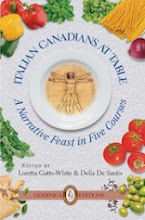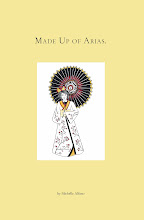 Quando c'è Che ... the rules seem to change. I am conflicted about this powerful image. And I am conflicted about this man's life and whether I should be enamored of this photograph taken by Alberto Diaz Gutiérrez, known as Korda.
Quando c'è Che ... the rules seem to change. I am conflicted about this powerful image. And I am conflicted about this man's life and whether I should be enamored of this photograph taken by Alberto Diaz Gutiérrez, known as Korda.This photo is used now to sell everything from T-shirts to knick knacks and the blank paged journal which I purchased at the UofT Bookstore and in which I wrote this initial entry. As a more conservative friend noted wryly, "Che must be spinning in his grave" watching this capitalist explosion of merchandising imagery and idolatry. He is now, as the writer Alvaro Vargas Llosa describes him, a "quintessential capitalist brand".
Was he a liberator and a true hero of the revolution? Or a murderer and a tyrant? Or all of these things at different points in his life? Is carrying his image about akin to carrying a picture of Stalin (who, by the way, Guevara admired). Would it be any different than walking around wearing a crucifix? Surely Catholicism has been responsible for many more deaths than Che and the revolutions in South America he might have spawned.
In this corner ... Che, liberator of Cuba, revolutionary par exemplar, murdered by the right for his leadership as a Communist and guerrilla. A man who forsook his bourgeois origins and the certain prospect of a comfortable, middle class life as a doctor.
In that corner ... a ruthless pursuer of Communist ideals and the building of a new Cuba. But he also laid the foundation for the totalitarian state that Cuba became where citizens were executed without trial, imprisoned if they disagreed with the government (or in the past simply if they were homosexual) and which still prohibits its citizens from leaving or emigrating legally.
Certainly his language was violent and unambiguous in his pursuit of Communist ideals. His actions followed suit killing both known and suspected enemies and authorizing others to do so as well. Hundreds (some say thousands) of deaths are attributed to him or to those following his direct orders. Alvaro Vargas Llosa noted in his 2005 New Republic article in "The Killing Machine: Che Guevara, from Communist Firebrand to Capitalist Brand":
After witnessing American intervention in Guatemala in 1954, Guevara radicalized and become convinced that the only way to bring about change was by violent revolution. He wrote in a letter to home: "Along the way, I had the opportunity to pass through the dominions of the United Fruit, convincing me once again of just how terrible these capitalist octopuses are. I have sworn before a picture of the old and mourned comrade Stalin that I won’t rest until I see these capitalist octopuses annihilated."
Vargas Llosa claims that in 1958, after the Cuban guerrillas took the city of Sancti Spiritus, Guevara tried to impose "a kind of sharia, regulating relations between men and women, the use of alcohol, and informal gambling". Not only was he unsuccessful but he seemed unable to control these impulses in his own life.
Most notoriously when he governed La Cabana, a prison holding those suspected of counter-revolutionary activity in the early years of the Cuban revolution, he was ruthless in his eradication of opponents and responsible for the death of hundreds of prisoners. In 1961, Guevara openly opposed the "right of dissidents to make their views known even within the Communist Party itself".
So the list is long and disturbing (only a tiny portion is noted here): murder, deprivation of human rights, theft of personal property, a single minded desire to force others to conform to his vision, hypocrisy. And certainly, the list of abuses are sometimes compiled by rabid anti-communists and Ayn Rand devotees (hello - welcome to the Internet) but Vargas Llosa, a respected political journalist born in Peru, does not appear to be one of these loony tunes with an agenda. But this might bear further inquiry which I will pursue.
So does embracing the artistic image (even if beautiful, artistic, powerful) condone the actions of the man? Is it immoral and illogical if I recognize these actions to be criminal and immoral but still covet the image, the other facets of the man, admire the image and show it to the world?
And what of my enthusiasm for the bandits Salvatore Giuliano, Jesse James and Ned Kelly - described variously as freedom fighters, terrorists, liberators, rebels. Even the notoriously unphotogenic John Dillinger of the 1930s has recently had a makeover - could they find a more handsome man than Johnny Depp to play him in the Public Enemies?
I have a framed album cover of an old LP which tells the story of Giuliano's life from when I was child. It sits above my writing desk (a gift from my sister) on the wall. Giuliano, killer of one hundred men, mostly carabinieri, and the presumed instigator of the attack on peaceful Communist supporters at the Portella della Ginestra. Should I take it down? Burn the 300 page fiction manuscript I wrote on his life? Renounce my interest in him?
I think we should be responsible for our fetishes, our little fantasies of romance and rebellion which may distort the truth. But I also think that, unfortunately, decades from now when the names of the dead are forgotten, these evils will also be forgotten or ignored for a more romantic viewpoint such as the one I have embraced about Giuliano.
Giuliano's transgressions are almost sixty years old and he is still venerated like a saint in Southern Italy. Jesse James has been dead since 1882 and he still elicits sympathy and admiration rather than repulsion or hatred. Ned Kelly is still a folk hero in Australia.
Their notoriety still grows, devotion swells, transgressions are seemingly forgotten ... so too with Che I think. Who mourns for the murdered lawman, the unfortunate bank teller or the bystander in the wrong place at the wrong time? Many admire a bad boy if you catch him on the right angle of the lens.
So I'm thinking, maybe I do not necessarily ditch the image but certainly ditch the idolatry lady.















